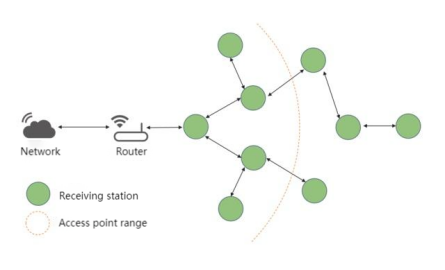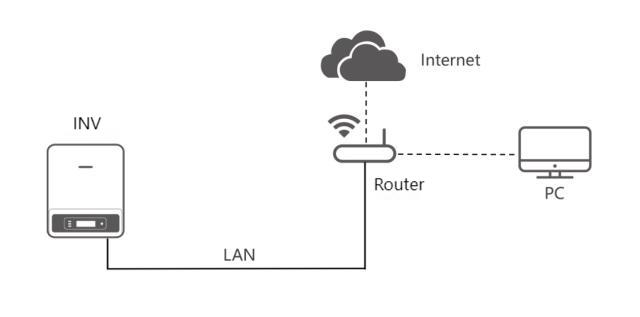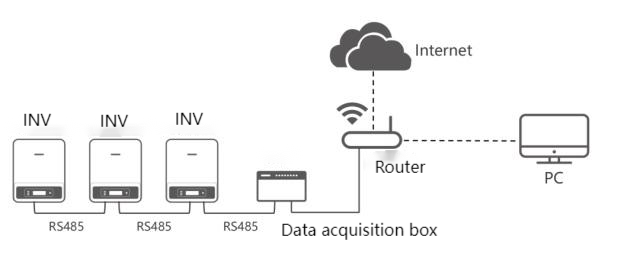Preface
With the rapid development of different types of photovoltaic power stations, the information perception ability of the power system is insufficient, the existing regulation technology cannot be comprehensive, measurable and controllable, and the management system of the regulation system is not enough to adapt to the development requirements of the new situation. At present, the communication mode of inverter is highly digital, intelligent and networked, which effectively supports the coordinated operation of massive dispersed objects and the precise decision of the complex operation state of the system under various market mechanisms, and promotes the energy system with power as the core to realize the efficient conversion and utilization of energy. As the core component of the power station, the inverter has different communication modes in different application scenarios
Communication mode and application scenario of the inverter
. A 4G communication

Introduction of communication mode: This mode is the most common communication mode at present. When the inverter is delivered, it comes with 4G communication module (built-in SIM card), each inverter is independently configured, and the data can be sent to the inverter platform through the wireless network and base station for remote browsing.
Main parameters: frequency band: 1800 MHz, use protocol: modbus TCP
Applicable scenario: the inverter distribution is relatively scattered, inconvenient wiring area.
Advantages: long communication distance; simple installation without cabling; support encryption function; support breakpoint continuous transmission; support remote upgrade.
Disadvantages: flow fee (inverter factory free 5 years flow. On the Small Cloud Window APP, the “traffic recharge” or self-service recharge, 36 yuan / year); poor communication has poor communication quality; no real-time control.
B. WiFi communication
Introduction of the communication mode:
Mode 1: wireless communication can be realized through the inverter matching WiFi module, and the IEEE protocol is used to upload the inverter data to the monitoring platform through the wireless network;
Way 2: through the inverter itself with WiFi communication module, and can be the role of each relay, this can do transmitter, and can do receiving station, through the final root node access router output communication signal, transmission rate of about 20 M/s, when the original path disconnected, can use the nearby node for data transmission.

Main parameters: communication distance: 10m, frequency band: 2.412GHz-2.484GHz, use protocol: modbus TCP
Applicable scenario: the area covered by wireless network; the inverter can be debugged using WiFi module + SolarGo APP; suitable for micro-inverse scenario.
Advantages: simple installation, no cabling; no traffic fee; support breakpoint transmission; remote upgrade, flexible networking and high communication reliability.
Disadvantages: easy to interference; limited by the installation environment.
C. Bluetooth communication
Introduction to communication mode: close communication can be realized through the bluetooth matching Bluetooth module of the inverter, and the LE protocol is mainly used for local debugging of the inverter.
Main parameters: communication distance: 10m, use protocol: modbus RTU
Applicable scenario: equipment requiring proximal debugging.
Advantages: convenient connection; no traffic cost; fast communication speed; low power consumption.
Disadvantages: short communication distance; unable to have Internet access.
D. LAN communication

Introduction of communication mode: the inverter can be connected with the router through the LAN module built into the inverter, and finally the inverter data can be uploaded to the monitoring platform through the wireless network.
Main parameters: communication distance: 100m; use protocol: modbus TCP
Applicable scenarios: mainly for foreign household scenarios and energy storage equipment.
Advantages: no traffic charge; convenient connection; stable communication.
Disadvantage: The inverter should have a LAN interface.
E. RS485 Communications

Introduction of communication mode: RS485 communication adopts the mode of wired connection, the inverter hand in hand connects the last inverter to the data collector, and then the inverter data is transmitted to the monitoring platform through the wireless network.
Main parameters: communication distance: 1200m; transmission rate: 9600bps / s; use protocol: modbus RTU
Application scenarios: large project capacity, large and concentrated inverters; special application scenarios requiring participation in control, such as power control, countercurrent prevention, etc.
Advantages: stable communication, strong anti-interference ability; realize control function; friendly communication with third parties.
Disadvantages: data collector; wiring; communication distance 1200m.
F. PLC communication

Introduction of communication mode: using the power line carrier communication, using the existing power line as the transmission medium, to realize the data transmission and information exchange. When sending the data by means of power line communication, the transmitter first modulates the data to a high frequency carrier, then couples it to the power line through power amplification, and finally recovers it to identifiable data through modulation and demodulation.
Main parameters: Communication distance: 1000m; transmission rate: 100 kbps / s frequency band: broadband 0.7-2.9MHz; use protocol: modbus RTU
Applicable scenarios: large project capacity, large number of inverters, and the use of voltage boost scenarios or low pressure without load.
Advantages: no additional communication line is required; stable communication.
Disadvantages: can not be used with load; need to increase modulation and modulation equipment; communication distance of 2000m.
Summary
Above is the inverter various mode of communication, can according to different application scenarios and demand point to choose the most appropriate mode of communication, under a variety of communication, control, build energy interconnection platform, improve the ability of power system balance, support the rapid development of new energy and efficient utilization, support source load store collaborative control, boost the construction of the new power system.






